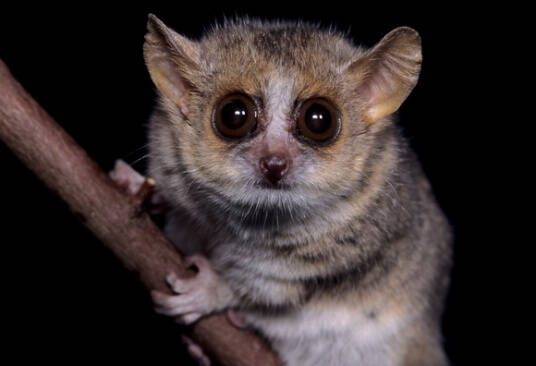Microcebus murinus
IUCN
LCBasic Information
Scientific classification
- name:Microcebus murinus
- Scientific Name:Microcebus murinus
- Outline:Primates
- Family:Mylidae Lemuridae
Vital signs
- length:12-14cm
- Weight:58-67g
- lifetime:3-4 years, can be kept for up to 14 years
Feature
Strong night vision and aggressive
Distribution and Habitat
Dwarf lemurs are mainly distributed in the tropical forests in the southwest of Madagascar.
Appearance
The dwarf lemur is 12-14 cm long, with a tail length of 12.5-15 cm and a weight of 58-67 grams. The dwarf lemur has a brown-gray body, a grayish-white abdomen, a round head, a short snout, large and protruding eyes, and a thick and long tail.
Details
Microcebus murinus, scientific name of dwarf lemur, is found in humid tropical rainforests, living in trees and groups, usually about 30 pairs living by streams or rivers. It mainly feeds on fruits and insects. It spends the day hiding in tree holes. In the evening, even if it wakes up, it will wait until sunset to dart around among the branches. Its movements are very cautious, often fleeting. Because they conquer the dark night of the forest with their protruding round eyes. It is aggressive and often fights for territory. It is mainly vegetarian, but sometimes it also eats insects, bird eggs and even baby birds. It mates in November and December every year and often fights. The pregnancy period is 5 months, with 2-3 cubs per litter, and sexual maturity at the age of 2. The life span is 18-20 years.

The breeding season for dwarf lemurs is from September to March, with a gestation period of about 60 days, two cubs per litter, and they can reproduce twice a year. The average lifespan of wild dwarf lemurs is 3-4 years old, and the lifespan of artificially raised ones can reach 14 years old.
The IUCN Red List is listed as: Least Concern (LC)
Protect wild animals and stop eating game.
Maintaining ecological balance is everyone's responsibility!








